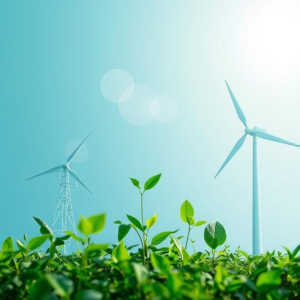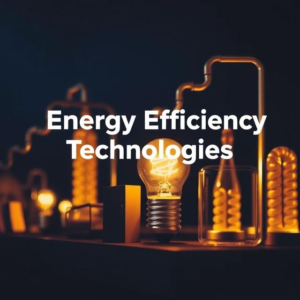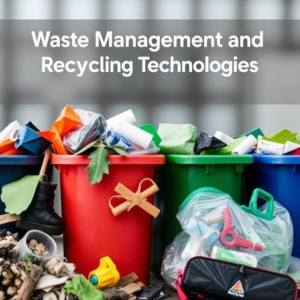Understanding the Various Types of Green Technology and Their Impact on Sustainability
Introduction
Green technology is revolutionizing the way we approach environmental conservation and sustainability. As the world faces challenges like climate change, pollution, and resource depletion, green technology offers innovative solutions that reduce environmental harm while promoting economic and social benefits. This article explores the different types of green technology, their applications, and how they contribute to a more sustainable future.

Renewable Energy Technologies
1. Solar Power
Solar energy is one of the most widely used types of green technology. Solar panels convert sunlight into electricity, reducing dependence on fossil fuels. Solar farms and rooftop solar systems have gained popularity due to their long-term cost savings and minimal environmental impact.
2. Wind Energy
Wind turbines harness wind power to generate electricity. Offshore and onshore wind farms provide clean energy, significantly cutting down carbon emissions. Advances in turbine technology have improved efficiency and reduced costs, making wind energy more accessible.
3. Hydropower
Hydropower utilizes water flow to produce energy, typically through dams and turbines. It is one of the most stable renewable energy sources but must be managed carefully to prevent ecological disruption.
4. Geothermal Energy
Geothermal power taps into Earth’s heat to generate electricity and provide direct heating. This sustainable energy source offers a continuous power supply and is particularly effective in regions with high geothermal activity.
5. Biomass Energy
Biomass energy is derived from organic materials like wood, agricultural waste, and biofuels. While it is a renewable source, it requires sustainable management to prevent excessive carbon emissions.
Energy Efficiency Technologies

1. Smart Grids
Smart grids improve electricity distribution, minimizing energy waste and enhancing grid stability. They integrate digital technology to optimize power usage and reduce outages.
2. Energy-Efficient Appliances
Products like LED lighting, smart thermostats, and energy-star-rated appliances reduce electricity consumption and lower utility bills while minimizing environmental impact.
3. Green Buildings
Sustainable architecture includes eco-friendly materials, efficient insulation, and smart systems that optimize heating, cooling, and lighting. Green buildings significantly reduce energy consumption and carbon footprints.
Sustainable Transportation
1. Electric Vehicles (EVs)
EVs reduce reliance on gasoline and diesel, cutting greenhouse gas emissions. With advancements in battery technology and charging infrastructure, EVs are becoming more viable for mainstream use.
2. Hydrogen Fuel Cells
Hydrogen-powered vehicles emit only water vapor, making them a promising alternative to fossil fuel-powered cars. They are still in early adoption stages but hold great potential for sustainable transportation.
3. Public Transport Innovations
Eco-friendly public transport options like electric buses, high-speed rail, and bike-sharing programs help reduce traffic congestion and air pollution.
Waste Management and Recycling Technologies

1. Advanced Recycling Methods
Modern recycling techniques, such as chemical recycling, break down plastics into reusable raw materials, reducing landfill waste.
2. Waste-to-Energy Solutions
These technologies convert waste into usable energy, including biogas and incineration for electricity production.
3. Biodegradable Materials
Eco-friendly alternatives to plastics, such as plant-based packaging and compostable materials, help reduce pollution and promote sustainability.
Water Conservation and Treatment Technologies
1. Desalination
Desalination plants convert seawater into freshwater, addressing water shortages in arid regions.
2. Water Recycling Systems
Greywater recycling and wastewater treatment reduce water wastage and ensure sustainable use of freshwater resources.
3. Smart Irrigation Systems
These systems use sensors and automation to optimize water usage in agriculture, reducing waste and improving crop yields.
Green Agriculture and Food Production
1. Vertical Farming and Hydroponics
These innovative farming methods use less land and water while producing high-yield crops in controlled environments.
2. Organic Farming Techniques
Sustainable farming practices reduce reliance on chemical fertilizers and pesticides, promoting soil health and biodiversity.
3. Lab-Grown Meat and Alternative Proteins
Cultured meat and plant-based proteins offer sustainable food alternatives that reduce the environmental impact of traditional livestock farming.
The Impact of Green Technology on Sustainability
1. Reduction of Carbon Emissions
By replacing fossil fuels with renewable energy and eco-friendly solutions, green technology significantly reduces greenhouse gas emissions.
2. Preservation of Natural Resources
Efficient energy use, water conservation, and sustainable materials help protect the planet’s resources for future generations.
3. Economic and Social Benefits
Green technology creates jobs in renewable energy, sustainable manufacturing, and eco-friendly product development, fostering economic growth.
Challenges and Future Trends in Green Technology
1. Current Barriers to Adoption
High costs, lack of infrastructure, and public awareness remain challenges in adopting green technology on a global scale.
2. Emerging Innovations
Artificial intelligence (AI) in energy management, carbon capture technology, and advancements in sustainable materials are driving the future of green technology.
3. The Future of Green Technology
Governments and industries worldwide are investing in sustainable solutions, making green technology a key component of future development.
Conclusion
Green technology is a vital tool in the fight against climate change and environmental degradation. By adopting renewable energy, energy-efficient solutions, sustainable transportation, and eco-friendly materials, we can build a greener, more sustainable future. As advancements continue, businesses and individuals alike must embrace these technologies to ensure long-term environmental and economic stability.